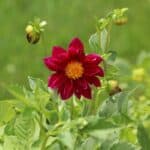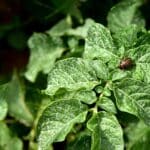Alyssum (Alyssum) or sweet Alison is a beautiful filler or ground cover plant to include in your garden if you need something showy that is going to keep the soil cool or if you want to create garden beds that are lush with plenty of dense growth and vivid blooms.
These plants produce bright flowers in hues like pink, purple, or white from spring to fall, attracting many pollinators to your garden.
Some also use Alyssum in vegetable gardens because it offers many pest control benefits.
You can pair sweet Alyssum with various ornamental plant species like marigolds, nasturtiums, or geraniums that offer pest-repelling benefits. Or you can grow it in rows next to vegetables like brassicas, tomatoes, potatoes, or legumes to increase crop yields, and aphids won’t attack your edible plants.
In this guide, we will take a closer look at these companions and discuss different ways to grow them alongside Alyssum.

What to Grow with Alyssum
If you want Alyssum to grow healthy and to flower vigorously, then you should place it in a sunny location in your garden. These flowering annuals or short-lived perennials should be placed in compost-rich soil that drains well and watered moderately.
For successful companion planting, it is best to combine Alyssum with plants that grow well in a full sun position in well-drained soil and pair it with species that are also water efficient.
Let’s look at some of the best species to combine with these showy flowers.
Crop Companions for Alyssum
Alyssum is often used in vegetable gardens because its flowers’ sweet fragrance will attract many pollinators that can help increase your vegetable yields. These charming flowers also attract predatory insects that love to feed on common garden pests that might threaten some vegetables. Aphids love to feed on sweet Alyssum and attack these flowers instead of your fruits and vegetables.
Gardeners also use this beautiful plant to suppress weeds in their garden beds, and the dense growth is excellent for keeping the soil cool and moist when it is warm.
Because of these many benefits, Alyssum is often paired with vegetables like the following.
Brassicas
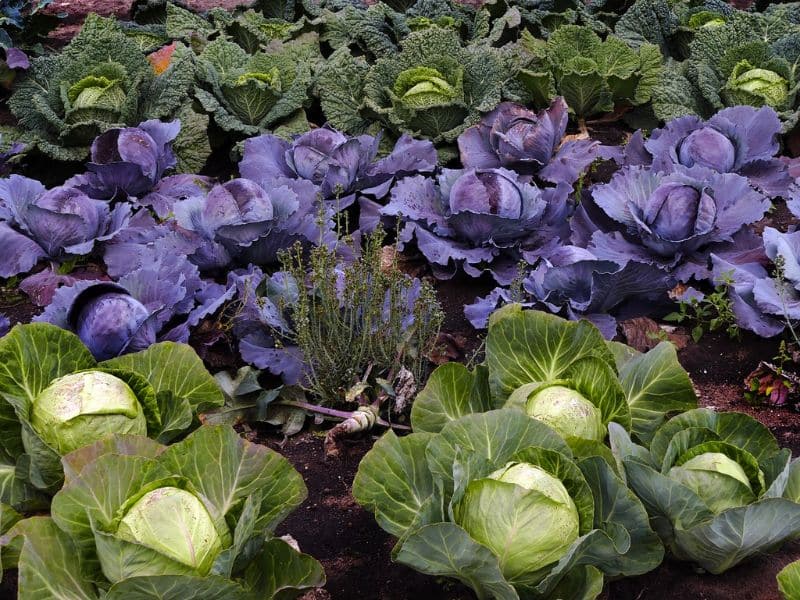
Sweet Alyssum is a member of the Brassicaceae family. The sweet fragrance of these florals is excellent for masking the strong scent that vegetable Brassicas emit so pests won’t flock toward your veggie garden. You can grow Alyssum next to all sorts of brassicas (Brassica), including cabbages, cauliflower, and broccoli.
You should mix sweet Alyssum in the same beds as brassicas or grow it as a border around your vegetable garden for optimal results.
Tomatoes
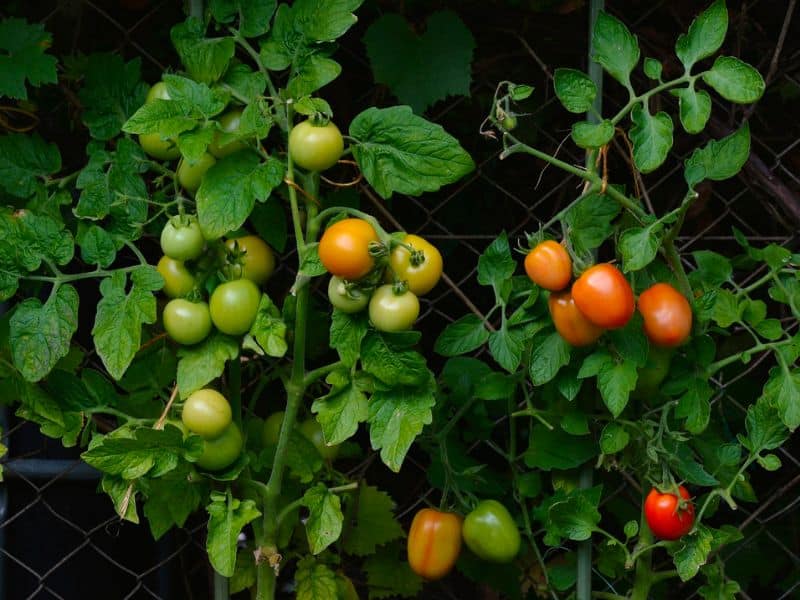
Alyssum does a good job protecting tomatoes (Solanum lycopersicum) from pests like caterpillars and aphids. The fragrant flowers lure pests away from your sweet tomatoes and attract predatory insects that love to feed on worms.
It is best to grow Alyssum in rows beside tomatoes or to position these flowers at the ends of your rows so you can quickly clear them away if they become infested with aphids.
Potatoes
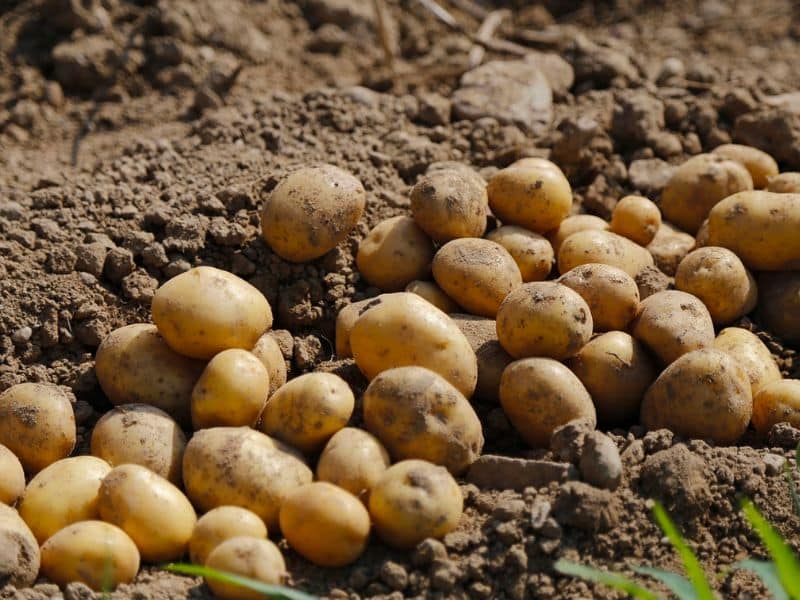
Alyssum can protect your potato (Solanum tuberosum) crops from pests like white grubs, whiteworms, potato beetles, or leafhoppers because the beneficial insects attract love to feed on these common garden pests.
If you mix Alyssum with potatoes, you will also boost the growth of potatoes because Alyssum will increase nitrogen levels in the soil, which can nourish healthy growth.
Legumes

You can increase your legume (Fabaceae) yields by growing Alyssum along peas or beans in rows. The fragrant flowers will attract plenty of pollinators. Aphids and other pests will also target Alyssum, which will spare your legumes.
Ornamental Companions for Alyssum
Because alyssum is so beautiful, these flowers are often combined with annual flowering species. You can create a powerful protective barrier around your garden by pairing alyssum with other pest-repelling plants like the following.
Marigolds

Marigold flowers (Tagetes) are often included in crop gardens because they also attract pollinators and predatory species to your patch. These flowers can also act as a sacrificial plant to lure pests away from crop species.
Marigolds and alyssum have similar growing conditions and can be mixed in vegetable or ornamental gardens or grown in rows amongst your veggies. This combination will add lots of life and color to your spaces and will form a stronger barrier against pests.
Geraniums
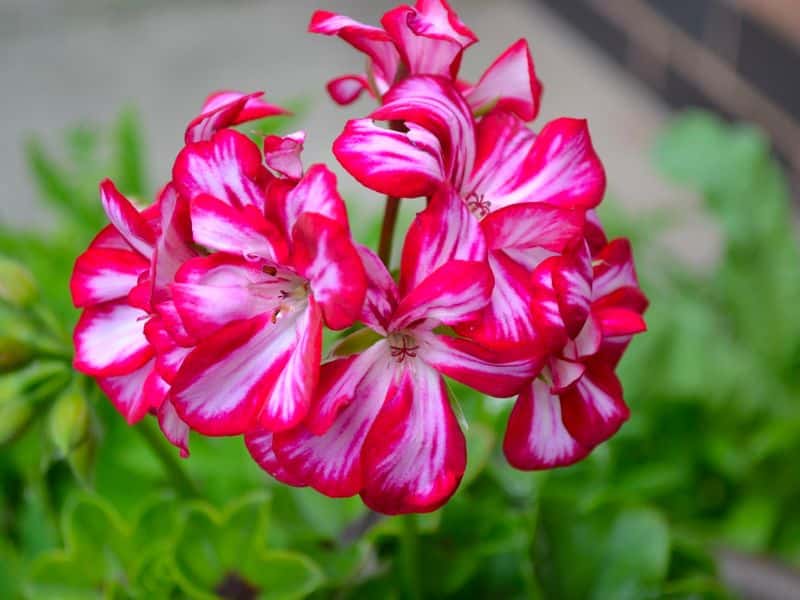
Geraniums (Pelargonium) are beautiful ornamental species that are easy to grow and care for. These low-maintenance plants come in various colors and are perfect for ornamental gardens.
In an ornamental space, you can grow Alyssum in front of the taller flowering shrub. You can combine it with scented geranium (Pelargonium graveolens) to repel pests like mosquitoes.
Nasturtiums
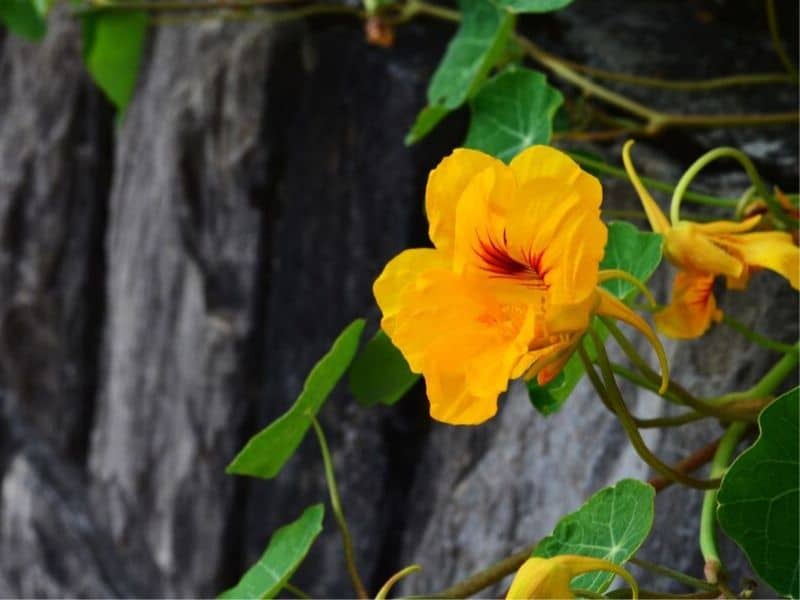
Nasturtiums (Tropaeolum) are edible flowers that can add color to your garden if grown next to Alyssum. These vine species are often used to attract pollinators, and it is also a great sacrificial plant to include in your garden if you want to lure aphids away from vegetables.
For this combination, it is best to trail the vine nasturtiums onto a fence and use sweet Alyssum as a ground cover in front of these trellised plants.
What NOT to Grow with Alyssum
Alyssum relies on lots of direct sunlight to grow well and flower. Because it is so sun-dependent, it is usually best to avoid growing it next to shade-loving species like ferns, hydrangeas, coral bells, or hostas.
These beautiful flowers will also develop root rot if they are placed in moist or waterlogged soil. You should avoid planting them with water-dependent plant species like begonias, turtleheads, creeping jenny, japonica, or Japanese forest grass.
Some gardeners also advise against growing Alyssum with sunflowers because sunflowers are allelopathic and release chemicals through their root system that can suppress the growth of your Alyssum flowers.
Landscaping Ideas for Alyssum and Companions
Alyssum is beautiful as well as functional and has many different garden applications. Here is a quick look at some of the best ways to use this fragrant plant in your garden.
Create Showy Vegetable Gardens
Alyssum, marigolds, and nasturtiums can be very useful pest control methods in vegetable gardens. These vivid flowering plants can be grown in rows next to vegetable species to protect your crops or mixed in the same garden bed as brassicas, leafy greens, or peas, where they will act as a ground cover and weed barrier. The bright flowers will make your patches look much more beautiful.
Grow Colorful Flower Gardens
You can grow beautiful water-efficient gardens by combining alyssum and other flowering species like nasturtiums, geraniums, or marigolds in a mixed bed. The mixture of annual flowers will add lots of color and are ideal for a showy border in front of a wall or alongside walkways.
Final Thoughts
There are many ways to use Alyssum and its companions in your garden. These flowering plants will look striking alongside ornamental species like nasturtiums, marigolds, or geraniums, and you can include them in vegetable gardens to protect produce plants like brassicas, tomatoes, potatoes, and legumes from common threats.
We hope that this guide helped you identify some of the best neighboring plants for Alyssum and that you got plenty of inspiration for your own showy and functional garden spaces.
See more:






